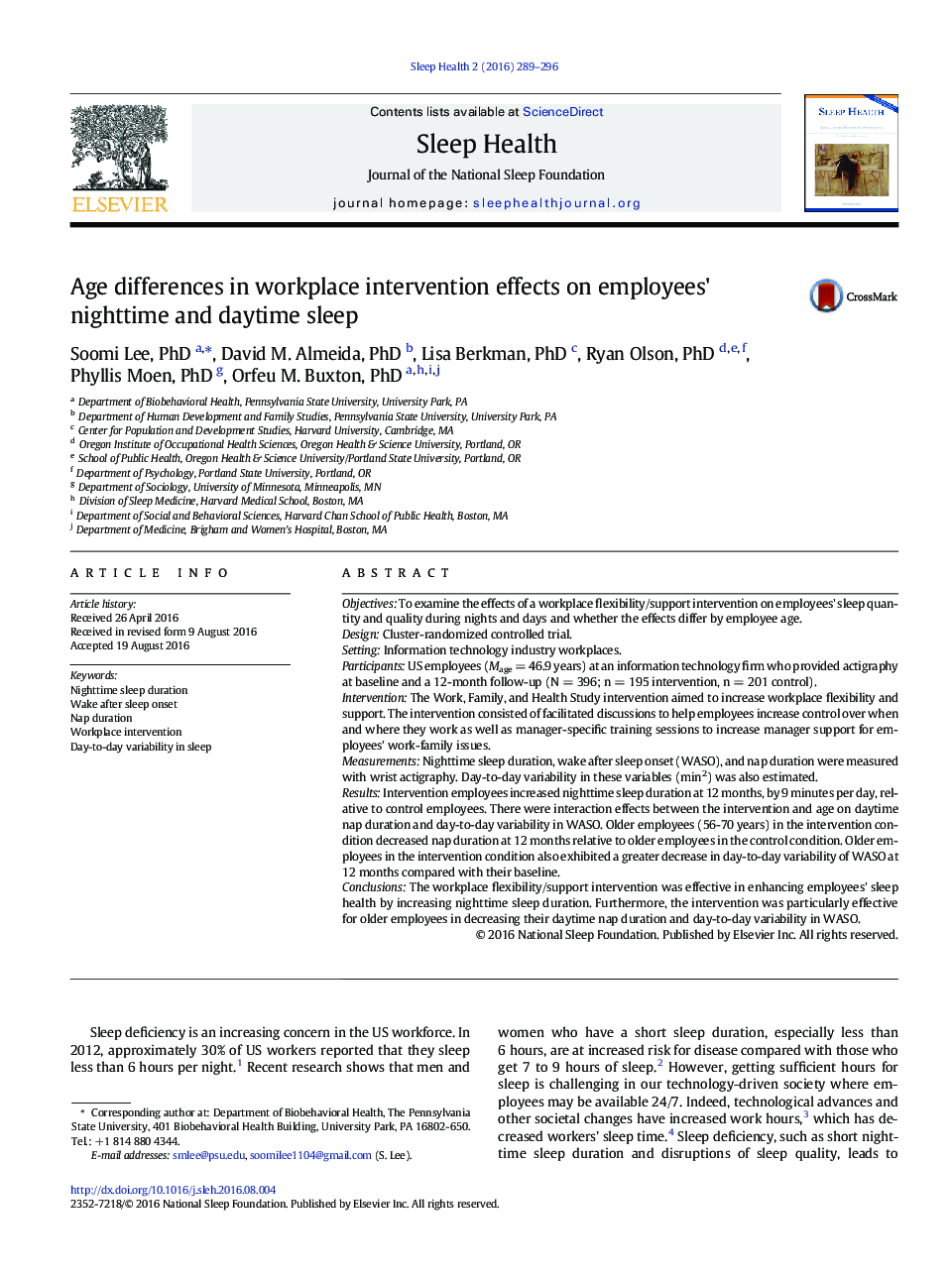| Article ID | Journal | Published Year | Pages | File Type |
|---|---|---|---|---|
| 5039531 | Sleep Health | 2016 | 8 Pages |
ObjectivesTo examine the effects of a workplace flexibility/support intervention on employees' sleep quantity and quality during nights and days and whether the effects differ by employee age.DesignCluster-randomized controlled trial.SettingInformation technology industry workplaces.ParticipantsUS employees (Mage = 46.9 years) at an information technology firm who provided actigraphy at baseline and a 12-month follow-up (N = 396; n = 195 intervention, n = 201 control).InterventionThe Work, Family, and Health Study intervention aimed to increase workplace flexibility and support. The intervention consisted of facilitated discussions to help employees increase control over when and where they work as well as manager-specific training sessions to increase manager support for employees' work-family issues.MeasurementsNighttime sleep duration, wake after sleep onset (WASO), and nap duration were measured with wrist actigraphy. Day-to-day variability in these variables (min2) was also estimated.ResultsIntervention employees increased nighttime sleep duration at 12 months, by 9 minutes per day, relative to control employees. There were interaction effects between the intervention and age on daytime nap duration and day-to-day variability in WASO. Older employees (56-70 years) in the intervention condition decreased nap duration at 12 months relative to older employees in the control condition. Older employees in the intervention condition also exhibited a greater decrease in day-to-day variability of WASO at 12 months compared with their baseline.ConclusionsThe workplace flexibility/support intervention was effective in enhancing employees' sleep health by increasing nighttime sleep duration. Furthermore, the intervention was particularly effective for older employees in decreasing their daytime nap duration and day-to-day variability in WASO.
